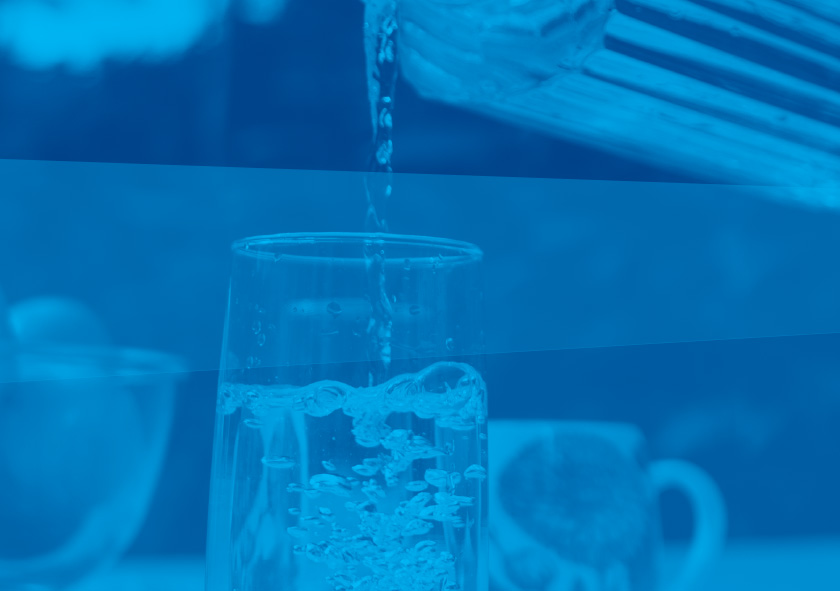


Supplying 1.5 million
people across Sydney
Future & climate
change safe




Historically, fresh water supplies delivered to Sydney's homes and businesses have mostly been sourced from Warragamba Dam.
But when severe prolonged droughts began threatening the city’s water supplies in the mid 2000’s, the NSW Government decided to build a desalination plant to help with Sydney’s water security.
Since it was completed in 2010, the Sydney Desalination Plant has drawn water from the ocean and transformed it into high-quality drinking water, supplying up to 15 per cent of the city’s drinking water.
Once the seawater is desalinated and turned into drinking water at our Plant at Kurnell, it is transported via a pipeline to the Sydney Water supply network at Erskineville.
Most of Australia’s capital cities have at least one desalination plant to help improve their water security.
Desalinated water is a valuable commodity not only in times of drought, but also when bushfires and floods cause water quality challenges at our dams.
It reduces our reliance on dams and groundwater as our main water supplies at a time when climate change poses a major threat to water security.



The future of desalination in Sydney
Climate change, our growing population and urban development mean we need to find new ways to source water for our city, especially non-rainfall dependent sources.



Desalination & the water cycle
The Sydney Desalination Plant plays a key role in supplementing Sydney's drinking water supply.
Find out moreCaring
for the ocean
We work hard to ensure our operations have minimal impact on the local marine environment.
Find out more


Frequently Asked Questions
- Is the Sydney Desalination Plant operating?While the Plant was originally designed to operate only in times of drought, it has remained operational since 2019 to help address several storage dam water quality issues arising from bushfires, flooding and significant maintenance tasks in Sydney Water’s supply network.
The Sydney Desalination Plant’s WICA Network Operator’s Licence enables the Plant to remain operational, recognising that the Plant has always been, and will continue to be, an essential component of Sydney’s water management and an integral part of our city’s water-resilient future. - How much water does the Plant produce?The Plant can provide up to 15 per cent of Sydney’s average drinking water needs without any reliance on rainfall.
It treats, filters and re-mineralises seawater to produce up to 91.25 gigalitres per annum of high-quality drinking water.
Under our WICA Network Operator’s Licence, the Plant will operate on a “flexible full-time basis”, producing between about 20 gigalitres to 91.25 gigalitres every year. - What does desalinated water taste like?Sydney Desalination Plant water is treated to taste the same as Sydney’s other drinking water.
Like dam water, water from the desalination plant is treated to meet Australian Drinking Water Guidelines, which makes it among the best in the world. - Who owns the Plant?Sydney Desalination Plant is jointly owned by the Ontario Teachers’ Pension Plan Board and the Utilities Trust of Australia, which is managed by Morrison. Find out more on our About Us page.
- Why is desalination important?The Sydney Desalination Plant is Sydney’s only major sources of non-rainfall dependent drinking water. It is one effective way of securing Sydney’s water supply against the effects of climate change and natural disasters and the increase in demand due to population growth, warmer weather and urban greening projects.
While the Plant was originally designed to respond to Australia’s severe millennium drought, recent experiences have demonstrated that drought is only one type of event that requires support from the Plant to ensure clean and safe drinking water for Greater Sydney.
The Plant has been a reliable drinking water supply during floods and bushfires, which caused water quality challenges from time to time in Sydney’s storage dams. - Where does the water go?The Plant can supply water to homes and businesses south of Sydney Harbour and as far west as Bankstown, as part of all their water supply.
Sydney Water uses a variety of water sources to supply customer needs. Where your water comes from depends on demand and where in Sydney you live.
If you live in the blue-shaded area on this map, you may receive water from the dams, the Sydney Desalination Plant or a combination of both. The Plant's water proportion will change throughout the day due to variations in supply and demand.
Everyone will benefit from desalination because it allows more water to be left in the dams, which means a more secure water supply for Sydney. - How much energy does the Plant use?The Sydney Desalination Plant requires roughly 38 megawatts at full production and is 100 per cent powered by renewable energy.
The average energy needed to provide drinking water to one household is about the same as the energy used to run a household fridge. - What’s the impact on the environment?Sydney Desalination Plant places a high priority on minimising any environmental impacts – both on land and in the water.
To support this, the Plant has put in place a world first stringent six-year marine environment monitoring program. The marine environment was monitored for three years before construction and three years after the Plant became operational. It demonstrated that the Plant has minimal effect on the marine environment.
On land, a third of the Plant site at Kurnell has been maintained as a conservation area. This area is protected, and native species of flora and fauna are regularly monitored. This includes a program to survey the numbers of grey-headed flying foxes and green and golden bell frogs in the area.


